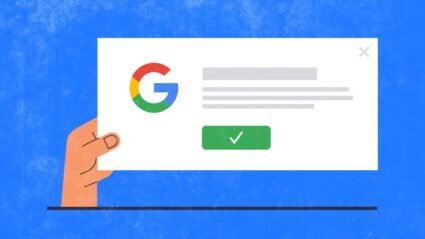2021 is shaping up to be a doozy for marketers when it comes to data privacy. Let’s make sure we’re all up to speed on the major known developments so far:
- Apple’s changes to its latest operating system will go into effect, which means bad news for the cross-channel tracking Identifier for Advertisers (IDFA).
- Google Chrome will officially send third-party cookies to a nice farm upstate, and new browser privacy laws are continuing to change consent requirements.
- The California Privacy Rights Act (CPRA) is now in full effect, joining the existing General Data Protection Regulation (GDPR) in the European Union, and federal privacy legislation in the United States is probably not far behind.
TL;DR: All of these developments are giving consumers more control over their data, and mean significant changes in targeting, tracking, and more for marketers. That combination of platform restrictions and legal regulation will fundamentally change how businesses can identify and market to consumers and prospects online.
So it’s time to get proactive if you’re going to make sure your brand is positioned to win in 2021: that means prioritizing a first-party data strategy. Like, immediately.
What is first-party data, and how is it used?
Before the days of behavioral advertising, brands focused on content-based contextual ads. If you wanted to reach sports fans, for instance, you would advertise on a sports website.
Now, marketers can target customers across the web based on profiles that extrapolate interests from a wide range of online and offline data sources. Instead of just showing sports equipment ads on sports-centered sites, you can follow users who have visited sports pages and show them relevant ads when they’re browsing, say, news sites.
But because of new data privacy laws and browser cookie-tracking changes, this foundational structure for digital ads is rapidly changing, with a greater emphasis on the use of first-party data: information collected directly from new and existing customers who have made purchases and/or opt-in to receive marketing such as email.
Because of this intentional relationship and implied consent, marketing powered by first-party data is more accurate and authoritative, provides better customer insights, has a higher conversion rate—and should be a top priority for maintaining customer relationships.
So what can a first-party data strategy do for your brand?
Deepen customer relationships and improve time to insight
You probably already have a fair amount of first-party data readily available. In many cases, the information is already in a point-of-sale or CRM system, or it can be easily collected through a customer data platform (CDP). By identifying and engaging users from the first interaction, you’ve got a much better shot at striking while the proverbial iron is hot.
Performance and scalability are key factors when choosing a CDP vendor. Here are the key questions you should be asking to ensure the platform you choose meets that criteria:
- How does the CDP resolve customer identities across touchpoints?
- CDPs are meant to provide a single point of control for all that is knowable about a customer—and they should be able to link those disparate data sources to individual profiles in real time (also known as identity resolution).
- Can the CDP accept data from offline and online sources?
- Many CDPs are designed to ingest data only from digital sources. It’s not possible to create a holistic customer view solely with online data. A true CDP accepts data from offline sources just as easily.
- Is it easy to keep the unified customer profile updated?
- The hallmark of a CDP is that it keeps each customer’s record consistently up to date. If the solution you’re considering isn’t able to support that, it’s probably not a true customer data platform.
- How quickly is clean, updated customer data made available?
- Many platforms help marketers and advertisers build and maintain a golden customer record, but only a true CDP makes that profile readily available in real time. Onboarding processes that take 24 hours to ingest new first-party data are not moving at the speed of the customer.
Scale customer acquisition and growth
Collecting first-party data (an email address, social media handle, purchase history) is a key first step, but getting a user to convert is another hurdle.
As consumers bounce between touchpoints, brands must be able to react across channels in real time. Thanks to the evolution of customer intelligence solutions, marketers can now integrate all of a brand’s offline and online first-party data to reach and engage actual customers wherever they are in their decision journey. That gives your business the opportunity to deploy hyper-personalized marketing down the funnel that turns visitors into customers.
The key to reaping the rewards of first-party data is getting the right data from the right sources:
- Website: Your brand’s website can provide a wealth of data on-site visitors, from names, email addresses, visitor behaviors, and transactions.
- Mobile apps: App users are your most enthusiastic supporters since, after all, they made the effort to download your app in the first place. To ensure useful data is being extracted from your brand’s app, marketers need to define which user events are meaningful and be sure to track and measure them.
- Email and SMS: Email marketing provides tried-and-true behavioral data like open rates, click rates, and bounce rates. Granular data about who is opening emails and whose interest is flagging allows marketers to segment audiences and run specific campaigns targeted to different levels of engagement. SMS data is similar: because text messaging is an intimate form of communication, customers who allow brands to engage with them via SMS show a high level of interest.
- Point of sale and CRM: This offline data may be your brand’s greatest source for online targeting, particularly because of the level of personalization it affords by integrating a shopper’s purchase history. Those insights are also very useful for larger-scale analysis: brands can see what is and isn’t selling, and where.
Build a foundation for long-term success
The path to collecting and reacting to first-party data about your customers wherever they are on their journey is no easy feat. Here are four key steps for taking your first-party data strategy to the next level:
- Conduct a comprehensive data audit: Audit your data sources to classify all relevant data points by how they’re being obtained, used, and measured. In many instances, different marketing initiatives across different teams have created silos with varying levels of scale when it comes to acquiring and collecting customer data. A data audit will help to break down those silos by creating a single database of sources.
- Create a strategic roadmap for your first-party data: Clearly define your marketing goals, the tactics and analytics required to break down those goals into actionable objectives, and create a roadmap for how your cross-channel marketing capabilities will develop over time.
- Demand more from your data: First-party data is critical for creating personalized, authentic, and meaningful customer experiences in any given context. Integrate offline and online data into a company-wide identity asset to drive customer-centric programs that align marketing, product, and service.
- Analyze and monitor data over time: Continually evaluate your first-party data capabilities by consistently monitoring progress and integrating what you’ve learned at each step along the way. Identify key success metrics for your solution, both in terms of operational capability and support for cross-channel marketing initiatives.







Responses